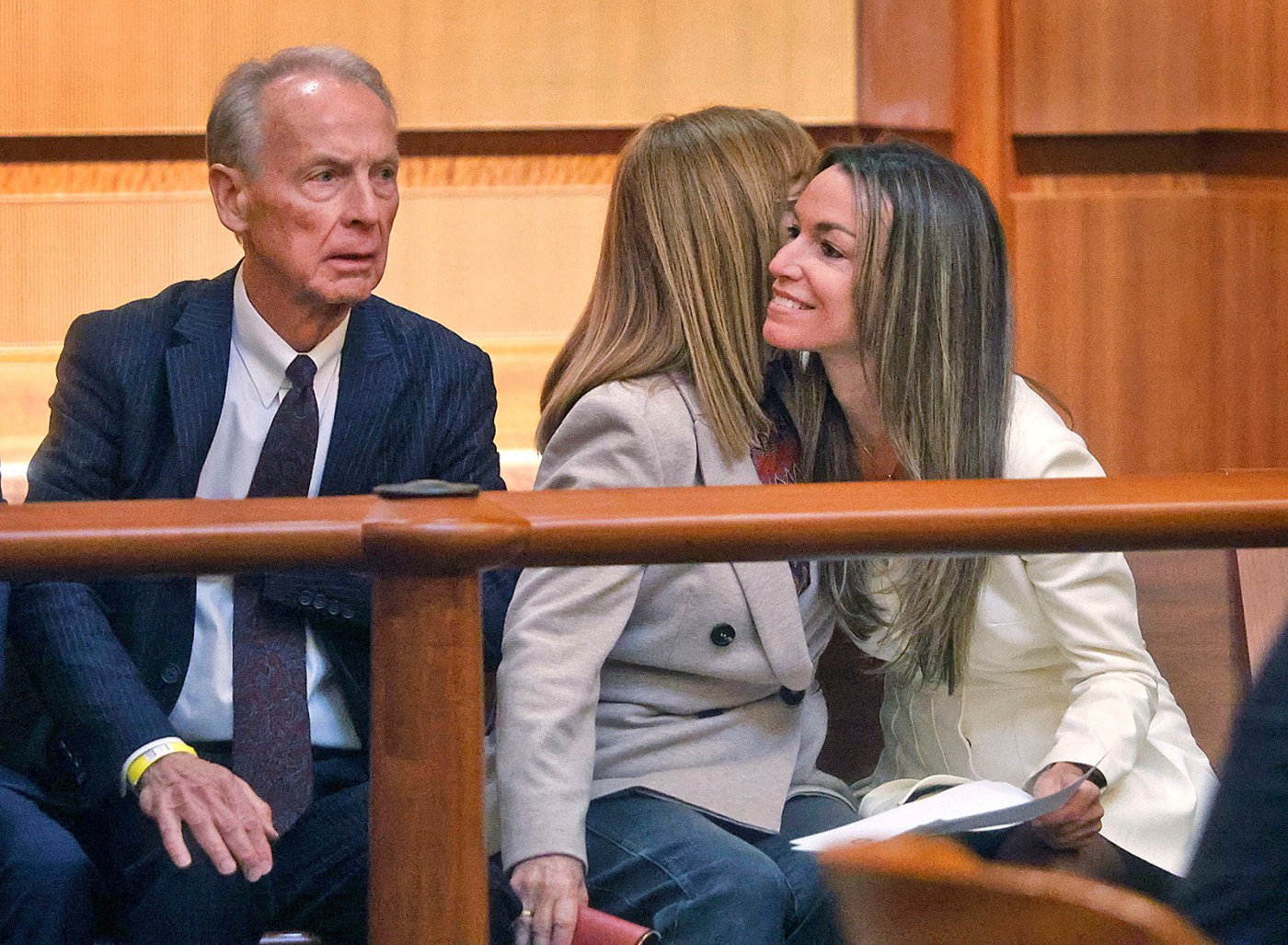
Massachusetts’ top court questions Karen Read’s argument to dismiss murder charge
Karen Read’s team put their legal arguments to have her murder charge dropped in her second trial to the test under questioning from the justices of Massachusetts’ highest court on Wednesday.
Read, 44, of Mansfield, is accused of mowing down her boyfriend of two years, Boston Police Officer John O’Keefe, with her SUV and then leaving him to freeze and die on a Canton front yard in late January 2022.
A trial held earlier this year on her charges of second-degree murder (Count 1), motor vehicle manslaughter (Count 2) and leaving the scene of a collision causing death (Count 3) ended with a hung jury and was declared a mistrial.
Her attorneys have since argued first to Norfolk Superior Court trial Judge Beverly J. Cannone and now to the Massachusetts Supreme Judicial Court that Cannone erred in declaring a mistrial without first allowing the defense an opportunity to argue against it — and, more importantly, that five jurors came forward to say the jury would have unanimously acquitted on Counts 1 and 3 and were only hung on Count 2, and thus in any future trial it would be a violation of Read’s rights to try her again on those charges.
On Wednesday, the seven SJC justices peppered both Read’s appellate attorney, Martin Weinberg, and the attorney from the Norfolk District Attorney’s office, Caleb Schillinger, on the finer points of their arguments — which have already been argued thoroughly in filings to the court.
The defense
Weinberg’s case hinges on the idea that Cannone should bring the jurors back in, one by one, for questioning to see if they were in fact ready to acquit — an argument he made in person to Cannone before she denied his motion to dismiss — and if they were indeed unanimous on Counts 1 and 3, then those charges should not be tried in the next go-around.
“If this was a Sixth Amendment issue, the jurisprudence of the court would compel a post jury inquiry. The Fifth Amendment values are just as important,” Weinberg said. “Questions can be designed, whether it’s final or was it ever reconsidered, that would demonstrate what we contend: these were final votes; this was the end of Count 1 and 3.”
Justice Scott L. Kafker said that Weinberg is arguing for interpretation of constitutional laws and so asked if Weinberg had a federal case that could back up his argument. Weinberg cited both Mississippi and Arkansas state cases but did not deliver a federal precedent.
Justice Serge Georges Jr. took a more philosophical line of questioning, asking Weinberg whether the jury’s purported unanimous decision were truly “fixed” and would remain that way if they were compelled to continue deliberations on Count 2, the motor vehicle manslaughter charge on which they were reportedly hung.
“The deliberations weren’t finished, they weren’t finalized and you keep using that term, but there’s still opportunity for folks to change their positions in the context of the continuing deliberations on Count Two,” Georges told Weinberg.
Weinberg countered that the jurors who spoke up said that nobody in the jury room believed Read had intentionally killed anyone, so a change of mind on the murder charge would be very unlikely.
Justices Kafker, Frank M. Gaziano and Dalila Argaez Wendlandt also questioned Weinberg on whether questioning the jurors on their decisions on each count before declaring a mistrial would have been a judicial conduct no-no by “interjecting” herself into the process. The jury sent three notes indicating an impasse before the trial ended.
“You’ve got an exhausted jury writing this very eloquent message saying, ‘We’ve done our best, we haven’t been able to reach a verdict on the charges,’” Kafker said. “There’s no inkling in that they’ve reached verdicts on charges or that this only relates to the second charge. Right?”
The Commonwealth
Assistant District Attorney Schillinger argued that the defense’s arguments that Cannone erred in declaring a mistrial without discussing it with attorneys first belies the defense’s own actions in the courtroom.
He said the defense’s push for the Tuey-Rodriguez instruction — which is a message a judge reads to jurors in a last push to spur them into effective deliberative action — showed they understood which way the trial would end up.
“The jury has twice already returned deadlocked. The defendant has argued strenuously that they are deadlocked, they’ve been given Tuey-Rodriguez and now the judge informs counsel, they’re at an impasse,” Schillinger said. “At that point, counsel couldn’t credibly believe that the result here was going to be anything other than a mistrial.”
Related Articles
Canton hires national firm to audit police department following Karen Read, Sandra Birchmore cases
Karen Read’s lawyers and the Norfolk DA’s Office want her murder trial to be delayed
Karen Read wins delay of civil case until after her new murder trial [+ Read the document]
Karen Read Vanity Fair 2: Accused killer says she’s ‘America’s happiest murder defendant’
Karen Read Vanity Fair series: Defendant owes more than $5 million in legal fees
While Weinberg argued that the 30 seconds or so it took the jury to file in before Cannone declared a mistrial was not enough for the defense to intervene, Schillinger countered that it would take only a moment for the attorneys to request a sidebar as they had throughout the trial.
Schillinger also said that Weinberg’s request for a post-verdict inquiry of the jurors is unlike the situations presented in known case law and amounts to something different that is not allowed.
“It’s one thing, your Honor, to bring a jury back and inquire as to extraneous influences to determine whether a verdict that was returned and affirmed may have been the product of other than a fair and impartial jury,” Schillinger said. “It’s quite another to bring a jury back to essentially construct a verdict.”

